
Introduction
The Peale’s Peregrine Falcon (Falco peregrinus pealei) is one of three subspecies of peregrine found in North America. The others are the Anatum Peregrine Falcon (Falco peregrinus anatum) and the Tundra Peregrine Falcon (Falco peregrinus tundrius).
Due to the effects of environmental contaminants, Peregrine Falcon populations declined substantially in the mid-twentieth century in the US and Canada. As a result, in 1972 the anatum and tundrius subspecies were identified for protection under the Endangered Species Act. Because pealei occurred in relatively inaccessable areas of the Pacific coast with reduced DDT exposure, pealei peregrines were not formally identified for ESA protection. That said, pealei were protected by the ESA under a similarity of appearances provision. A ban on insecticides and Peregrine Falcon reintroductions to their former range led to the species recovery and delisting in 1999.

Taxomony
Peale’s peregrines were recognized as a taxonomically unique group by taxonamist Robert Ridgeway in 1873. Ridgeway named the subspecies pealei in honor of Titian Ramsey Peale, a 19th century taxidermist and collector of zoological specimens.
Titian was a teenager at the time. He worked for his father, Charles Willson Peale, who headed the prestigeous Philadelphia Museum. The museum held the first collection of zoological specimens of the western Hemisphere. Sadly, Titian died at age 18 of yellow fever. Titian was immortalized by having a Peregrine Falcon subspecies named after him (at least in the eyes of peregrine aficianadoes like me!)
Ridgeway’s decision to designate the subspecies pealei was based on two “type” specimens collected 30 years apart, one from Washington’s Puget Sound, the other from Sitka, Alaska. Both falcons were large, dark-plumaged juvenile females.

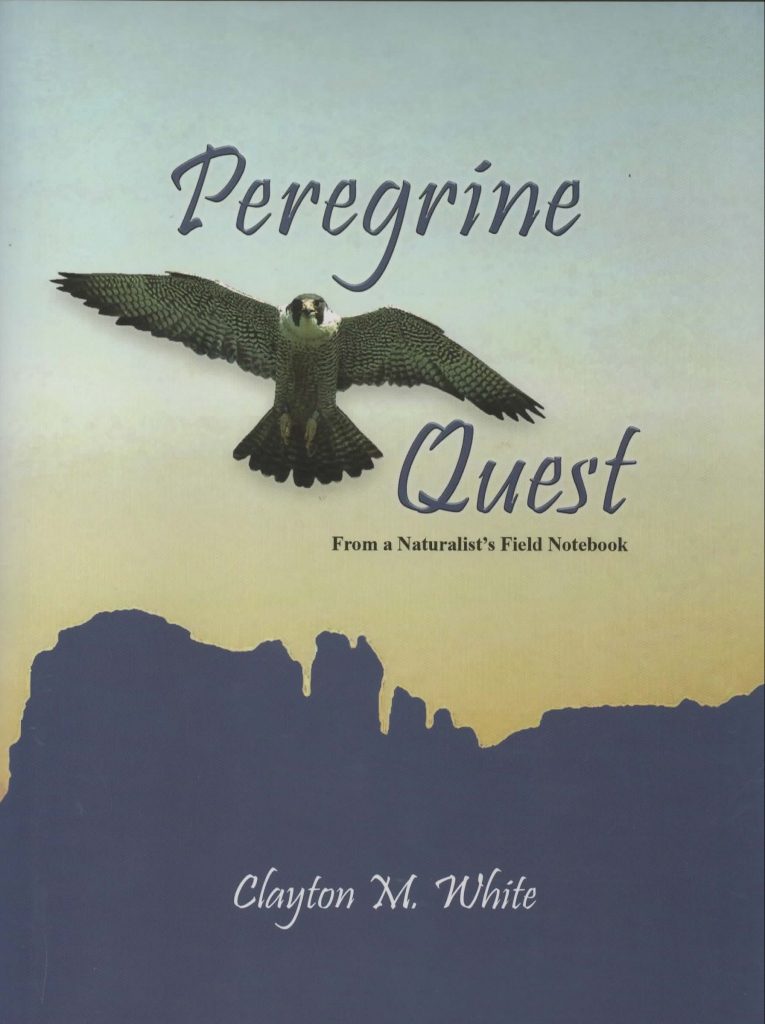
Range
The breeding and migratory range of pealei is limited to the islands, rivers and shorelines associated with North America’s Pacific coast. Given their narrow geographic distribution, pealei may be aptly described as a quintessential coastal raptor (quintessential: the pure and essential essence of something; from dictionary.com.) Note that the Steller’s Sea Eagle is also a quintessential coastal raptor. (Click here to read about my encounter with Stella, a vagrant Steller’s Sea-Eagle that I just so happened see while vacationing in the maritime province of Newfoundland.)

Morphology
Pealei are the largest and most heavily pigmented of the 18-19 subspecies of peregrines identified worldwide in Peregrine Falcons of the World,
Peregrine Falcons of the World reports on the existence of two subtypes of Peale’s peregines: a dark-plumaged Aleutian type (which I describe in Bird Man Dan’s blog The Aleutian Peregrine Falcon) and a “Haida Gwaii” type. The nesting range of the Haida Gwaii type extends from the Aleutian Islands east and south along the Pacific coast to northwest Oregon. Juvenile plumage of individuals of this subtype range from dark to light.

Washington Coast Peregrines
Between January 1995 and May 2024, conducted more than 1,277 raptor surveys on the three coastal beaches in Washington shown on the map below. These surveys were completed fall-spring when peregrines migrate through or overwinter on our study area beaches. The surveys were conducted over the years by Coastal Raptors volunteers and me and my colleagues Joe Buchanan and Tracy Fleming. The data sared below on the occurence of the three subspecies on our beaches were compiled for a research paper to be published in the fall 2025 issue of The Journal of Raptor Research.

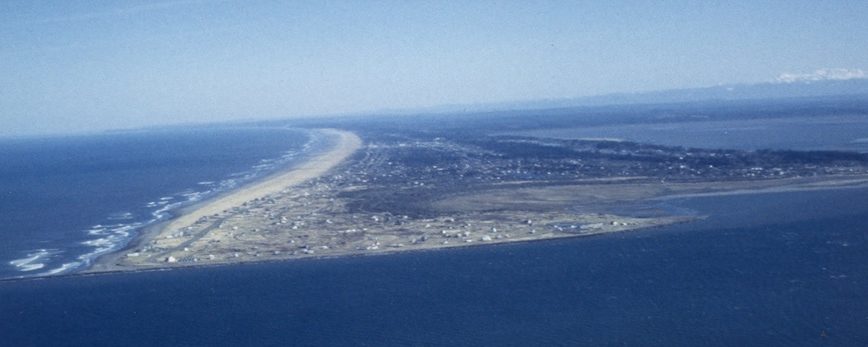
During those surveys we banded and made subspecies determinations on 241 falcons. Using plumage coloration and measurements, we classified 79% (191 individuals) as pealei, 11% (27) as subspecies uncertain (hybrids), 7% (16) as tundrius, and 3% (7) as anatum.
Below I share photos of four Peale’s peregrines, each shown in first-year, juvenile plumage and after first-year adult-type plumage.
Peregrine Falcon W/Z. Banded at Ocean Shores on 11/17/2007.

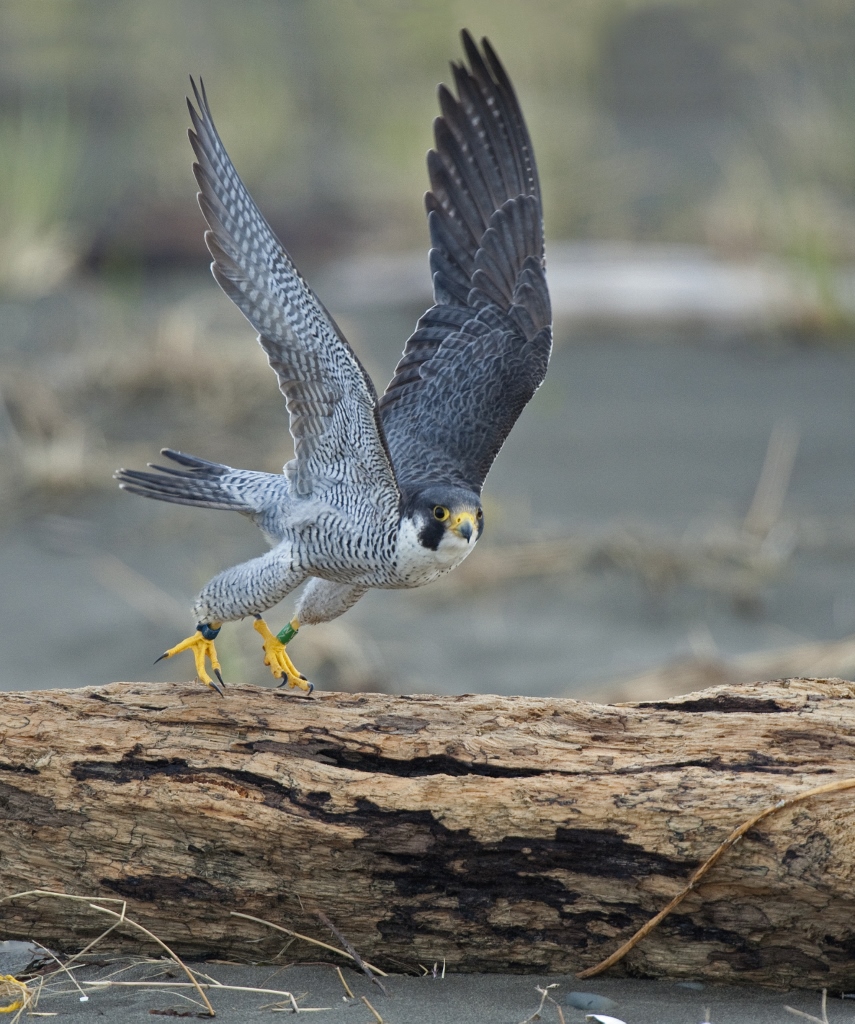
Peregrine Falcon A/4. Banded at Ocean Shores 9/19/2008.
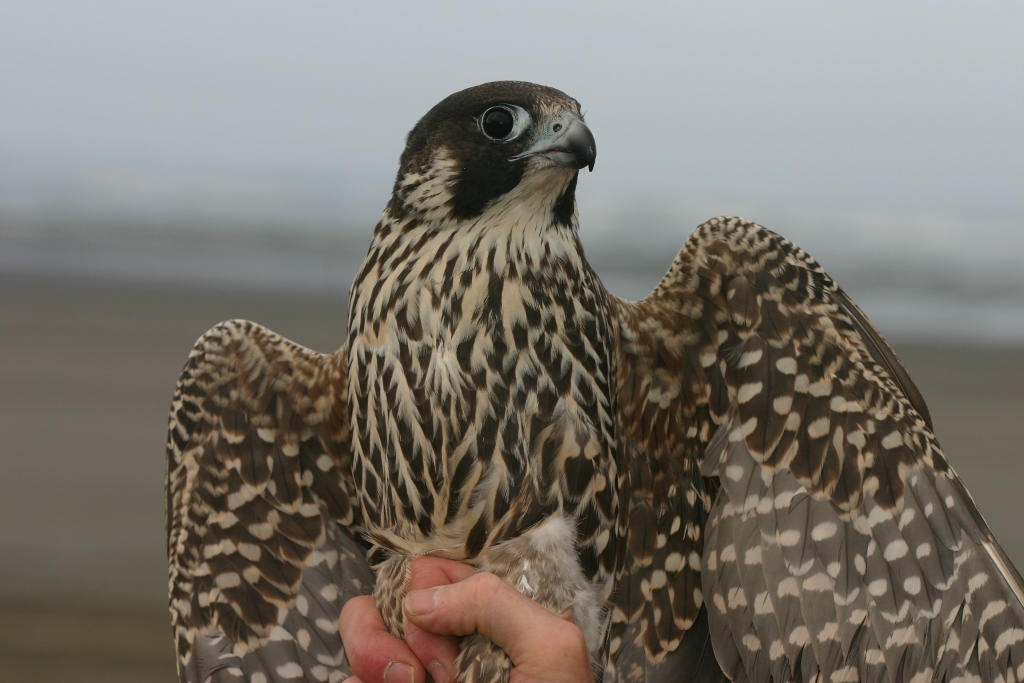
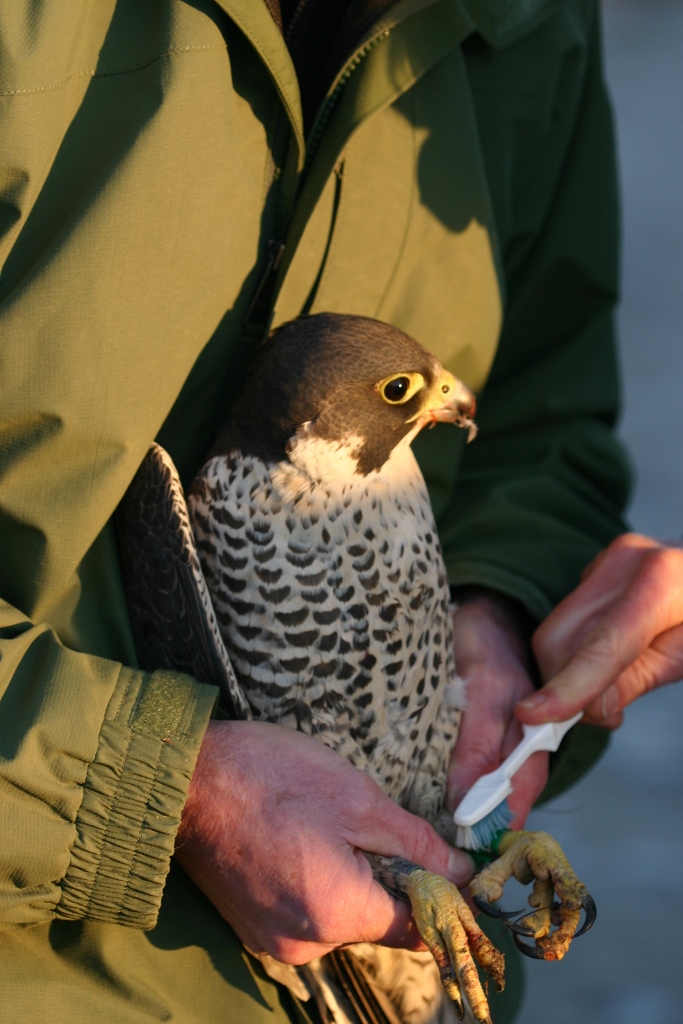
V/V. Banded at Long Beach on 1/19/2003.

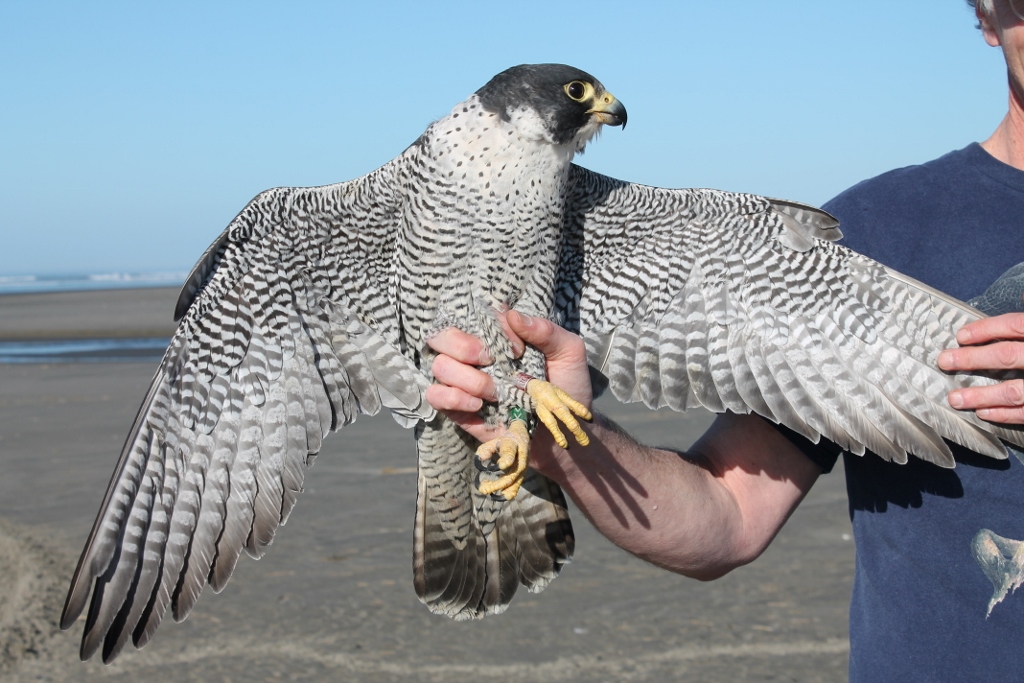
35/B. Banded at Ocean Shores 10/30/2018.


The three subspecies interbreed where there geographic ranges overlap. A total of 27 (11%) of the peregrines that we’ve banded we’ve categorized as subspecies “undetermined,” as mentioned above. Peregrine Falcon 8/7, shown below, exemplifies a falcon in the undetermined category.
8/7. Banded at Ocean Shores on 3/29/1997.


Note: If you would like to see more of my Blog posts on Peregrine Falcons, click on “Pacific Coast Peregrines” below.

2 responses to “The Peale’s Peregrine Falcon – A Quintessential Coastal Raptor”
Thank you for your blog, your photos and research. I am an artist who researches everything I choose to paint, one of which are birds. I am also a native plant gardener and avid bird enthusiast. As a result of introducing native plants, I have small birds that visit my garden. With the increase of small birds visiting my garden, I have had raptors circling overhead and swooping down feeding. Yesterday, 12/20/2024 and a couple days earlier I had an unusually large raptor that looks and behaves like a Peregrine Falcon having dramatic displays with the Crows in my neighborhood and in my garden. This led me to your blog to find out what this bird could be. One of my next art projects will be painting this species and possibly writing and illustrating a children’s story. I am also an art vendor for Shorebird festival in Hoquim.
Thanks much for sharing, Teresa.